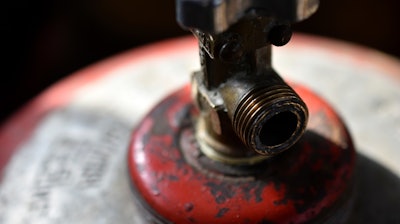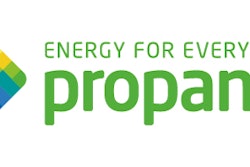
Ongoing air quality challenges and emission reduction efforts are resulting in a growing number of laws and regulations across the country. Notably, more than 50% of the U.S. population lives in a state with comprehensive carbon emissions legislation. Many of these laws can shape the landscaping industry and its day-to-day operations.
Most recently, California Gov. Gavin Newsom signed into law a small-engine ban as a mandate toward electrification. Small off-road engines (SORE) are spark-ignition engines rated at or below 19 kilowatts, including engines used for lawn and garden equipment, as well as other outdoor power equipment and specialty vehicles.
This ban and the goal of decarbonization has landscaping professionals reevaluating their equipment options. As many consider a single-energy mandate with electrification, it’s important to consider the true environmental and financial burden this creates. Propane offers a clean, ultralow emissions energy solution for landscaping professionals, powering a wide variety of small-engine applications.
Notable Challenges From Electrification Mandates
While legislations toward electrification are being deployed in an attempt to reduce greenhouse gas emissions, some states are overlooking the challenges this creates for landscaping professionals. Notably, it’s important to call out that commercial zero-emission equipment is not yet comparable to gas-powered small engines when it comes to performance or cost and can introduce battery compatibility issues, as well as a lack of adequate infrastructure to support a full transition.
Additionally, Andrew Bray, vice president of government relations for the National Association of Landscape Professionals, said the zero-emissions commercial-grade equipment that landscapers use is also prohibitively expensive and less efficient than the existing gas-powered lawn mowers, leaf blowers and other small machinery. Gas-powered commercial zero-turn mower costs $7,000 to $11,000, but its zero-emission equivalent costs more than twice that amount, he said.
Batteries are a major expense, too. Bray said a three-person landscaping crew will need to carry 30 to 40 fully charged batteries to power its equipment during a full day’s work.
Propane Offers Affordable, Eco-friendly Energy Solution
Landscaping professionals seeking clean, sustainable equipment for their maintenance and landscaping needs don’t want to sacrifice cost or performance in the process. With propane, they don’t have to make a trade off.
Propane offers competitive pricing in commercial landscaping, helping companies avoid the expenses associated with electrification including infrastructure costs and expensive batteries—all while eliminating downtime for recharging and restrictions brought on by electric power chords. Propane-powered equipment has a longer lifespan and requires fewer maintenance costs over time than electric equipment, too, strengthening its value proposition.
And propane boosts productivity and the bottom line all without sacrificing its environmental impact. In fact, propane offers a low emissions alternative for many small engine applications. According to data from the Propane Education & Research Council (PERC), propane-powered equipment emits fewer nitrogen oxide (NOx) emissions than equipment powered by electricity, gasoline, and diesel—and using propane produces 43% fewer greenhouse gas emissions than using an equivalent amount of electricity generated from the U.S. grid.
While propane is already a low-emissions energy source, it’s only getting cleaner as the propane industry and top brand manufacturers continually work together to improve propane engine technologies, exhaust emissions, and fuel efficiency.
Propane Gets Cleaner With Renewable Propane
Renewable propane is a byproduct of the renewable diesel and sustainable aviation fuel production process, which converts plant and vegetable oils, waste greases, and animal fat into useful energy. The production of renewable propane has increased, and the adoption of this sustainable energy source will continue to grow.
Because it is produced from renewable feedstocks, renewable propane is even cleaner than conventional propane (an already clean option), and far cleaner than other energy sources. And renewable propane can be used for all the same applications, given that its chemical structure and physical properties are the same as conventional propane.
The production and adoption of renewable propane both continue to grow. Propane marketers in California have committed to providing 100% renewable propane by 2030.
While already established in more urban areas, specifically in California, this fuel is growing in popularity in other parts of the country, too. In fact, earlier this fall, the city of Petersburg welcomed the first gallons of renewable propane into the commonwealth of Virginia. The city’s police and shuttle fleets are converting 49 vehicles from gasoline to run on renewable propane. This transition will not only significantly reduce the vehicle fleet’s greenhouse gas and criteria pollutant emissions, but it will also save the city money with propane’s low total cost of ownership.


![Doosan Bobcat Wacker Neuson Stack 2ec Js Pb V6e[1]](https://img.greenindustrypros.com/mindful/acbm/workspaces/default/uploads/2025/12/doosan-bobcat-wacker-neuson-stack2ecjspbv6e1.CPyyz8ubHn.png?auto=format%2Ccompress&bg=fff&fill-color=fff&fit=fill&h=100&q=70&w=100)








![Doosan Bobcat Wacker Neuson Stack 2ec Js Pb V6e[1]](https://img.greenindustrypros.com/mindful/acbm/workspaces/default/uploads/2025/12/doosan-bobcat-wacker-neuson-stack2ecjspbv6e1.CPyyz8ubHn.png?ar=16%3A9&auto=format%2Ccompress&bg=fff&fill-color=fff&fit=fill&h=135&q=70&w=240)








